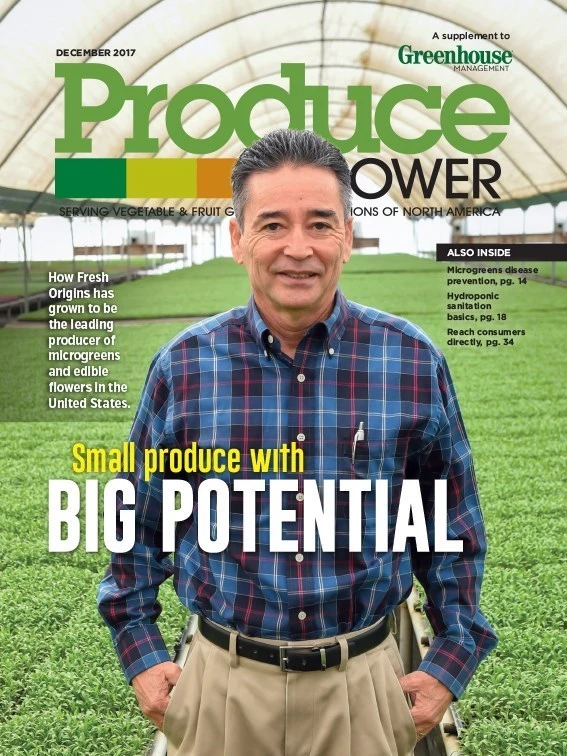
No matter how much growing space an operation has, proper sanitation is essential. Below, Dr. Vijay Kumar Choppakatla, plant pathologist at BioSafe Systems, offers his insight into proper sanitation practices.
Produce Grower: What are some tips for growers looking to improve greenhouse sanitation?
Dr. Vijay Kumar Choppakatla: Greenhouse conditions can promote growth of not only plants but “other” life forms, which include plant pathogens, microbial bio-films, insects, algae and weeds. It’s imperative that some of these ‘others’ have to be contained through a good greenhouse cleaning and sanitation program to maintain/improve crop quality and general aesthetics of the greenhouse production.
The areas of focus should be on places like benches, floors and irrigation systems, including pipe lines and water storage tanks. Cleaning is the first step in this process that’s typically done in between crops and involves removal of any loose plant or soil debris from the previous crop, removal of any weed growth through mechanical or chemical means, and removal of any attached organic and inorganic deposits on surfaces through use of power wash or rinse with chemical cleaners. After a thorough water rinse, sanitation step should follow using approved sanitizers.
PG: Are hydroponic greenhouses more difficult to keep clean?
VC: The nutrient-rich water and wet environment in hydroponic crop production can accelerate algae growth both on surfaces and in water when compared to conventional greenhouses. Also, waterborne plant pathogens such as Pythium are a major concern in hydroponic production, and cross contamination risk is high between plants, especially in re-circulated water systems. Hence, both surface and water sanitation are key in hydroponic systems.
PG: What issues can stem from not maintaining a clean greenhouse?
VC: Algae growth in greenhouses, in addition to being unsightly, can also impact other aspects of crop production, such as impediment to water/nutrient percolation, and breeding ground for nuisance pests such as fungus gnats and shore flies. In irrigation lines, algae and biofilm growth can cause issues such as clogging of filters and reducing the water flow. In addition, extreme algae growth on walkways can be a safety hazard for workers. Weeds can harbor and serve as alternate hosts for some of the major greenhouse pests, such as thrips, whiteflies, mites, etc., and viral pathogens, such as Impatiens Necrotic Spot Virus (INSV) and Tomato Spotted Wilt Virus (TSWV). Also, fungal pathogens such as Rhizoctonia and Thielaviopsis can spread through the soil/plant debris attached to pots and flats, and can cause plant root infections.
PG: Are there any products you’d recommend growers use?
VC: Multiple products are available based on different active ingredients/chemistries. Each may have its own advantages and limitations and should be carefully assessed before implementation. When it comes to chemical cleaners, there are some alkaline and acid based products available for greenhouse use such as GreenClean Alkaline Cleaner, GreenClean Acid Cleaner and Strip-It. When it comes to sanitizers, there are several available for greenhouse use such as Hydrogen Peroxide + Peroxyacetic acid, Quats, Sodium Hypochlorite, Ozone and Chlorine Dioxide. — Interviewed by Chris Manning

Explore the December 2017 Issue
Check out more from this issue and find your next story to read.
Latest from Produce Grower
- TIPA Compostable Packaging acquires paper-based packaging company SEALPAP
- Divert, Inc. and General Produce partner to transform non-donatable food into Renewable Energy, Soil Amendment
- [WATCH] Sustainability through the value chain
- Growing leadership
- In control
- The Growth Industry Episode 8: From NFL guard to expert gardener with Chuck Hutchison
- 2025 in review
- WUR extends Gerben Messelink’s professorship in biological pest control in partnership with Biobest and Interpolis





